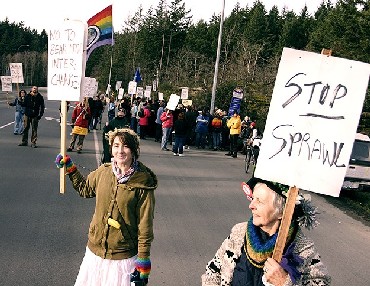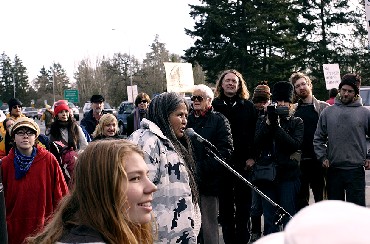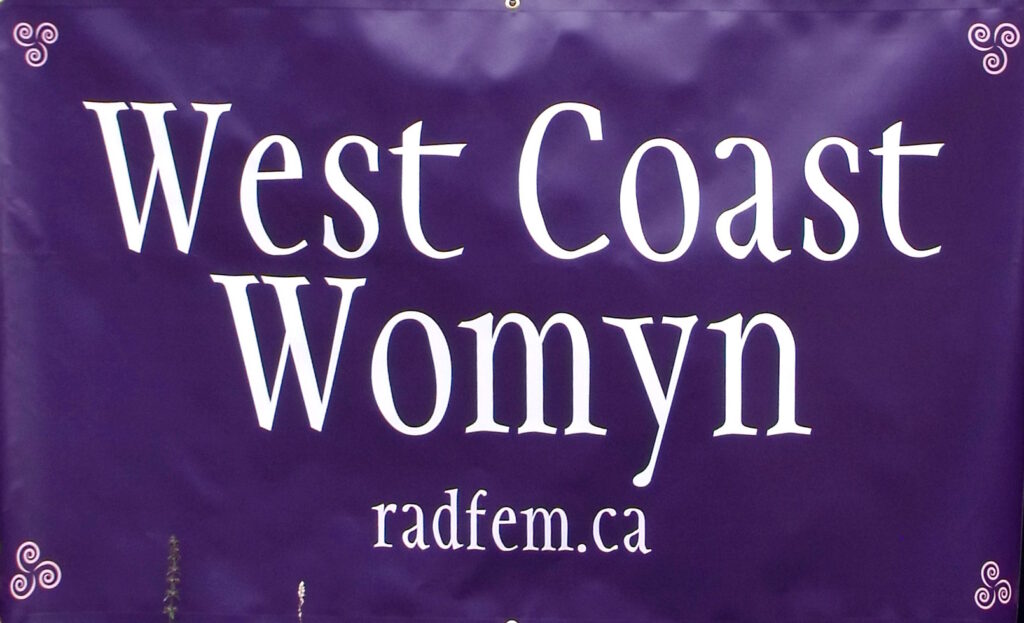From Infoshop.org and our December 15 press release.

Rally against the interchange, December 8, 2007. (Photos by Pete)
Bear Mountain Tree Sitters Bracing for a Showdown
Since April 2007, people have been occupying a large piece of land in Langford, British Columbia, Canada in order to stop the construction of a four-lane cloverleaf interchange. The interchange is being built to service the recent Bear Mountain developments (golf course, luxury homes, etc.). The land that is to be used for the road construction includes many culturally and ecologically sensitive sites including a large garry oak ecosystem, a sacred cave, a pond, and culturally modified trees. People have been resisting the Bear Mountain developments for some time, but the city of Langford and the developers have been plowing forward with their plans.
A series of visits from RCMP and Langford bylaw enforcement officers in the past few days has put the campers on high alert. On Friday, December 14, police walked into the camp and took photographs of everyone they saw. Bylaw enforcement officers also photographed people and the camp. Work crews removed two banners on Highway 1 Friday afternoon, and police threatened to arrest the campers if they interfered. A new banner was raised Friday evening.
The city is expected to demand a court order to remove the campers so interchange construction can begin. As of Friday, volunteers had raised five platforms to the tops of the trees, up to 120 feet (40 meters) off the ground, in an effort to stop the project so that environmental and cultural values can be protected. Another platform is set to be raised on Saturday, December 15.
In April, a loosely-organized group established a camp in the woods to protect the wetlands, forest, cave, and wildlife from the development. The area around Spencer’s Pond and the Langford Lake Cave at the north end of Leigh Road is valued by local residents as a park and green space. The new interchange is likely to decimate the cave, the pond, the underground geology and the diverse wildlife in the area.
Volunteers have conducted their own survey of the flora and fauna in the path of the new highway project. Some of the results are online at the Treesit Blog, along with maps, photos, background and links for more information.

Rose Henry (centre) speaks to the crowd about indigenous rights.

